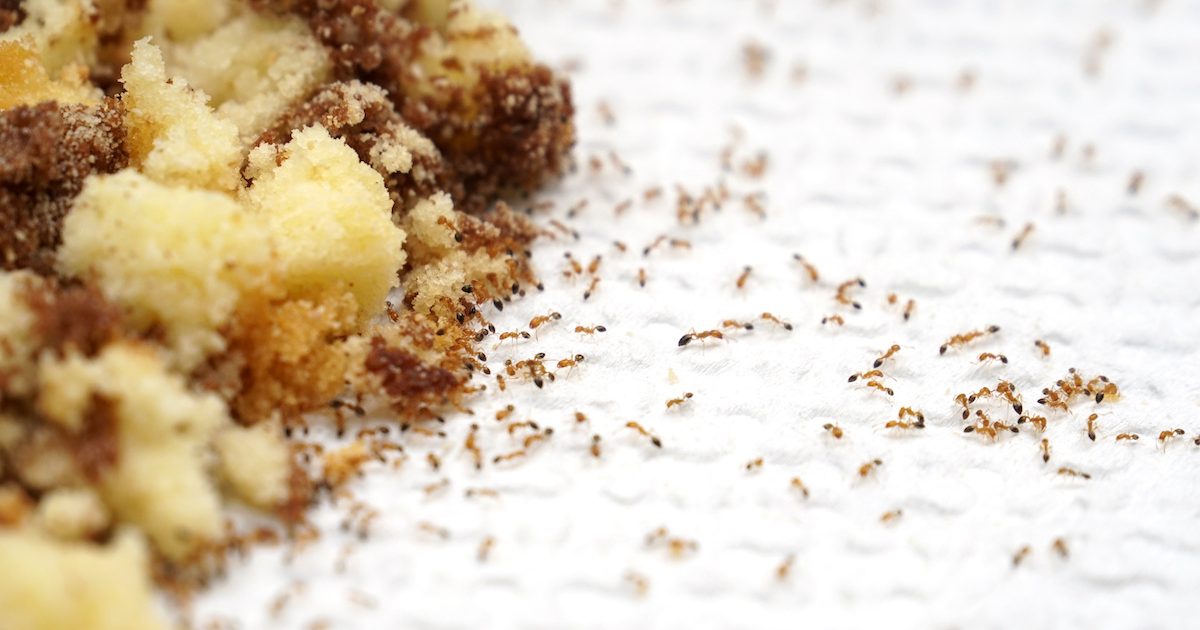
If you’ve been in your kitchen recently, you may have noticed some strange creatures lurking in your cupboards. It’s not uncommon to find pantry moths or other pests in your home. This is especially true if you live in an old house with small spaces. But that doesn’t mean they can stay there!
These little critters will happily make a nice home out of your pantry if you let them. They can leave behind their droppings, eggs and larvae throughout flour, cereal. Unfortunately, this includes other food storage locations where they find moisture and nutrition.
The good news is that you can prevent these pests from invading your pantry. Here’s everything you need to know about recognizing pantry pests and how to get rid of them once and for all.
What Are Pantry Pests?
Pantry pests are insects that live in food storage areas, like your pantry or kitchen cabinets. The most common types of pantry pests are moths, ants, and cockroaches. Many of these pests share appearance traits that make them easy to identify. They’re small and typically dark colored. However, roaches are typically large, especially the German cockroach.
Pantry pests have a few common habits. They usually stay in dark places with a high level of humidity, like a leaky basement or an un-insulated kitchen cabinet. Food pantries are a ripe environment for pests. They can’t survive in a clean and dry environment. But when the conditions are right, these pests can breed quickly and start to damage your food.
Moths in the Pantry
Moths are the most common type of pantry pest. The most common type of moth in the pantry is the Indian meal moth. You can also find less common species like the Mediterranean flour moth and almond moth.
You may have heard that moths are attracted to dirty pantries or to certain types of food. The truth is that moths are attracted to dark places with a high level of humidity.
If your pantry is unorganized, has a lot of clutter or a low level of light, you may be inviting moths in. If you store your food in plastic bags, you could also be trapping in moisture and inviting in moths. Moths aren’t interested in the food. Instead, they lay eggs in the food, which can ruin it. Once you know what to look for, you can identify and get rid of moths in your pantry.
How to Handle Flour Moths
Flour moths are particularly destructive pests, since they feed on high-protein foods like whole grains. This includes wheat, corn, rice, oats, barley and more. You can store flour in a sealed plastic bag, but it will only keep out pests for so long.
Flour moths are small enough to fly in through the zipper and up through the bag. You can prevent flour moths from damaging your flour by keeping it in the fridge. To prevent flour moths from damaging your flour, keep it in the fridge where it’s cold enough to kill the eggs and larvae. If you don’t have room in your fridge, you can also place it in a freezer bag and keep it in the freezer.
If you store a lot of rice or other grains, you may find rice or grain moths. You can identify these pests by the webbing they leave behind. If you store your grains in cloth bags, you can prevent the moths from damaging them. You can also seal your grains in airtight containers. These pests are also attracted to stale or old food. If you have a lot of grains, you may need to regularly check for freshness and discard any that is old. This will keep pests away and make sure your grains are safe to eat.
Ants in the Pantry
One of the top pantry pests that may come to mind is ants. Ants are a major nuisance and can be quite damaging if not controlled. They are very active when foraging for food outside. When they discover a food source in your home, they will bring other ants to that location.
While ants can be a nuisance, they also can be harmful to your health. If you have ever been stung by an ant, you know that they have a very potent sting that can cause itching, swelling, and can even cause allergic reactions in some people. They also carry a slew of diseases including salmonella, strep, and E. coli.
Ants are very common throughout the United States, but most especially in the southern regions where there is a lot of moisture and warm temperatures. Ants love sugar. So if you have any open packages of sugar, flour, or other pantry items that have been opened for a bit, you may be inviting ants into your pantry.
You can prevent ants from coming into your pantry by sealing all food packaging, removing any crumbs from the floor, and keeping your pantry clean. You can also get rid of ants by putting out traps.
What are the Signs that You Have Ants in Your Pantry?
You know that you have a serious ant problem when they start showing up in your kitchen pantry. These pests love to feast on any kind of food that is being stored in your pantry, and they can quickly turn a box of granola bars into a smorgasbord of deliciousness.
In the process of rummaging through your pantry, ants can leave behind a variety of telltale signs that they have been there.
These signs include:
Discarded wings — Ants shed their wings when they grow into adulthood.
Ant droppings — Droppings look like small black or brown seeds.
Piles of soil or dirt — This is a potential sign of an ant nest.
American Cockroach
One of the worst pests you might find in your pantry is the American cockroach. American cockroaches can grow up to one inch in length, and they like to live in damp, warm places with plenty of food.
These pests are very prolific and can quickly turn a single roach into many thousands in just a few months. If you find one roach, you can be sure there are many more hiding out in your pantry. They will quickly ruin your food and leave a foul odor. If you have American cockroaches in your pantry, you will need to hire a professional to get rid of them. These pests are extremely difficult to eradicate by yourself.
German Cockroach
The German cockroach is a type of roach that is commonly found in temperate climates. This species of cockroach is usually larger than most other types of roaches and is light to dark brown in color.
This type of roach is more active at night and you won’t see them much during the day. Furthermore, the German roach is considered to be one of the most common household pests, especially in the eastern United States. Unfortunately, German cockroaches love to lurk in pantries. If you find the German cockroach in your pantry, it’s time to call Drive-Bye Exterminators for help.
What are the Signs that You Have Cockroaches in Your Pantry?
Cockroaches will leave behind evidence of their presence, including droppings, shed exoskeletons, and holes in food packaging. You might also notice an unpleasant musty or musky smell in the pantry. If you find any of these signs of cockroach activity in your pantry, you should take immediate steps to get rid of the roaches and prevent them from coming back.
Conclusion
Pantry pests can cause a lot of damage and are not very pleasant to deal with. If you see any of these pests in your pantry, it’s important to take care of the problem. You can prevent pantry pests by keeping your pantry clean and dry. You can also place traps around the pantry to catch a few pests before they spread and cause more damage.






